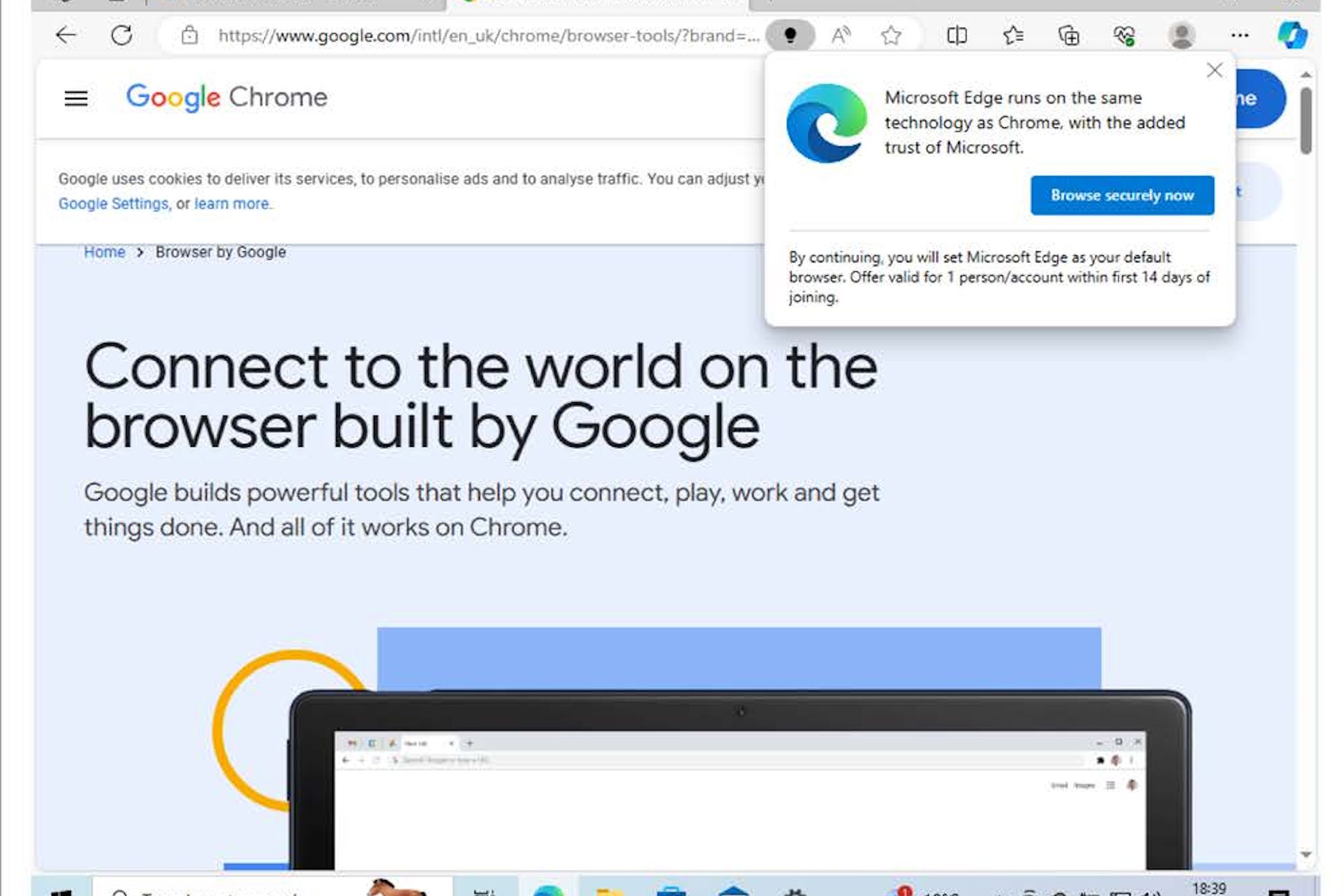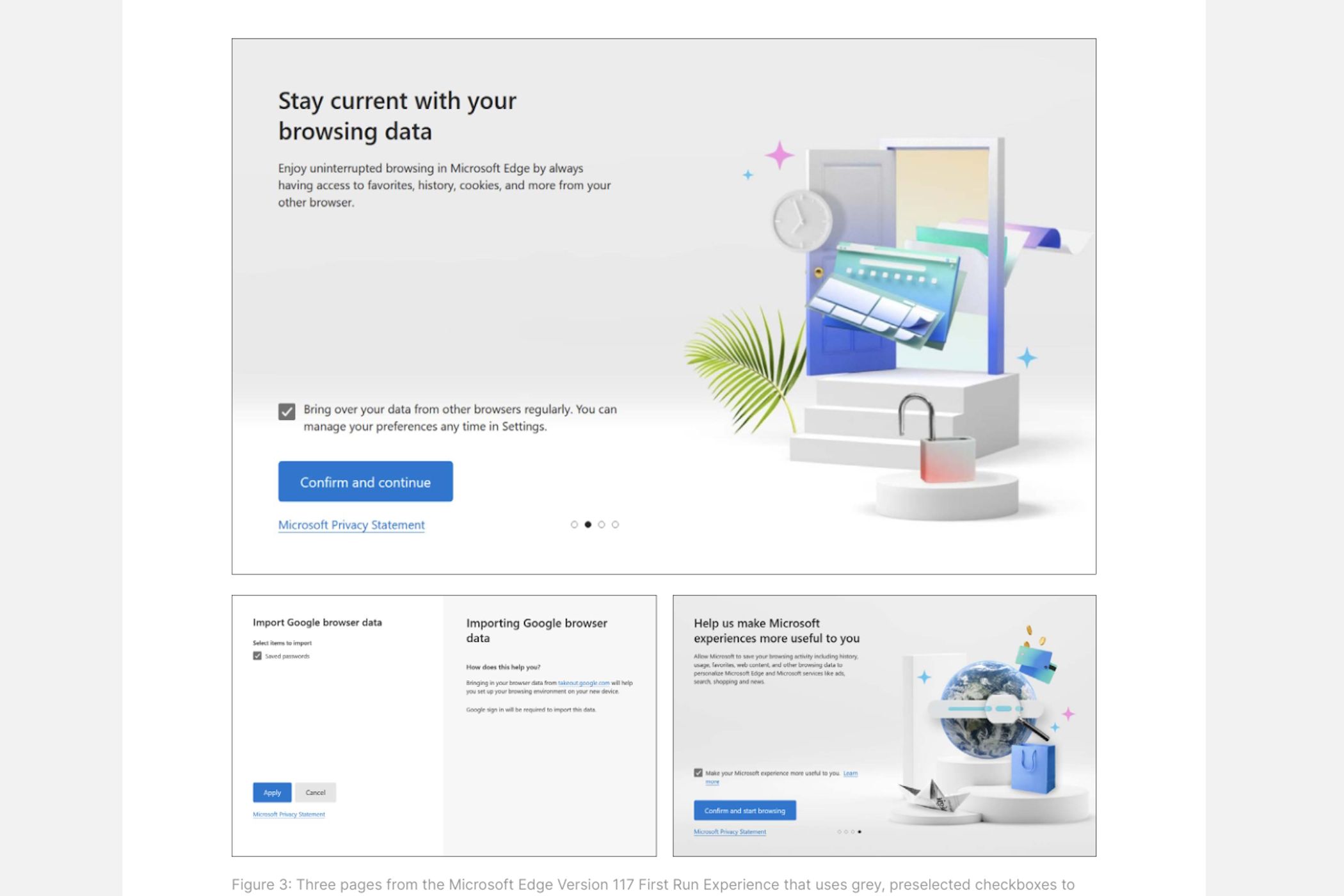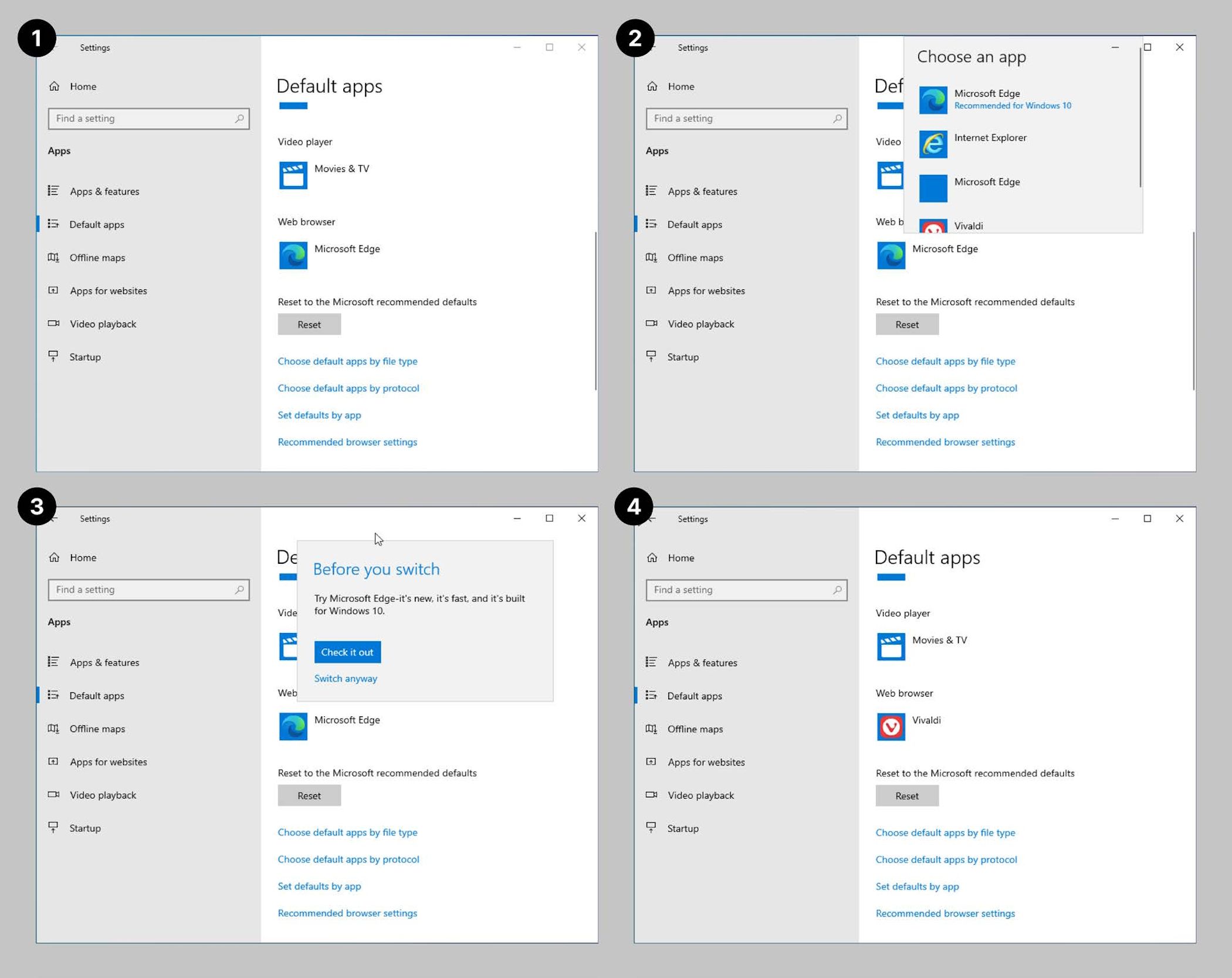Key Takeaways
- Edge intrudes on the process of downloading a new browser with constant pop-ups and messages, undermining its own reputation.
- During the first-time setup for Edge, Microsoft uses tactics like pre-checked checkboxes and colors to influence user choices.
- Windows makes it difficult for users to change default browsers away from Edge, adding obstacles and keeping some extensions on Microsoft Edge even after changing defaults.
Have you ever tried to download Chrome or Firefox using Edge? You’ve likely experienced this after buying a brand-new PC and opening Edge to download your preferred browser. If you’ve ever been annoyed by how clingy Microsoft can get, you’ll be pleased to hear that Mozilla shares your sentiment; so much so that it has published a 74-page report dissecting and analyzing Mircosoft’s tactics to get people to use Edge.
Mozilla’s report on Microsoft Edge’s behavior
In a report titled Over The Edge: How Microsoft’s Design Tactics Compromise Free Browser Choice, Mozilla breaks down why it believes Microsoft’s methods of advertising Edge over its competitor browsers use “harmful designs.”
Microsoft Edge intrudes in the process of downloading a new browser
Image Credit: Mozilla
If you’ve tried downloading Chrome or Firefox using Edge before, you’ve already seen these designs; they’re the constant pop-ups and messages that appear throughout the process, and it’s one of the ways Microsoft is shooting itself in the foot with Edge.
If you’ve never seen these nag windows before, Microsoft does its utmost best to convince you to use Edge. It starts when you boot up Edge and search for “Firefox” or “Chrome” in the search bar. This then brings up a Bing search page, with a banner stating that “there’s no need to download a new browser.” Then, Edge “follows” you as you proceed to the browser download page, showing a pop-up asking you to stick with Edge and a banner ad for the browser over the download status page. In its report, Mozilla states that these are, essentially, adverts disguised as advice from Microsoft.
The Microsoft Edge first-time setup allows users to overlook options
Image Credit: Mozilla
However, Mozilla goes deeper than analyzing how Microsoft intrudes on the process from opening Edge to downloading a new browser. Mozilla also notes that, during the first time setup for Edge, Microsoft uses specific tactics to get people to do what it wants. One of these includes pre-checked checkboxes that import data from other browsers into Edge, placed near a big blue button that’s more eye-catching than the rest of the page. Mozilla notes that this may be taking advantage of the human tendency to go with an option pre-selected for them, over them consciously opting in for a feature.
The browser giant also notes the use of colors during the setup process:
The colour of this checkbox – grey – is also important. This does not follow Microsoft’s
own design guidelines and templates, which specify that a ticked checkbox should be an
eye-catching blue colour. According to Microsoft’s design documentation51 grey should only
be used when a checkbox is disabled, communicating to the user that nothing will happen
if they click the checkbox. Placed as it is on a white background, this grey is low contrast
and easy to overlook.
Windows adds obstacles to changing the default browser
Image Credit: Mozilla
Finally, Mozilla notes how Windows makes it difficult for users to change default browsers away from Edge. On Windows 10, the operating system will ask the user to check out Microsoft Edge if it detects the user trying to change the default browser away from it. And in Windows 11, Mozilla notes that setting a browser as default doesn’t change every single extension defaults to the new browser, keeping some of them on Microsoft Edge.
In its conclusion, Mozilla notes that “Microsoft uses a number of harmful designs to influence users into using the Edge browser” and that the Redmond giant “should stop using these techniques immediately.” It’s unclear right now if Mozilla decides to take further action past this report, but it’s a sign that Edge’s competitors are displeased with how Microsoft presents its browser.
[ad_2]







